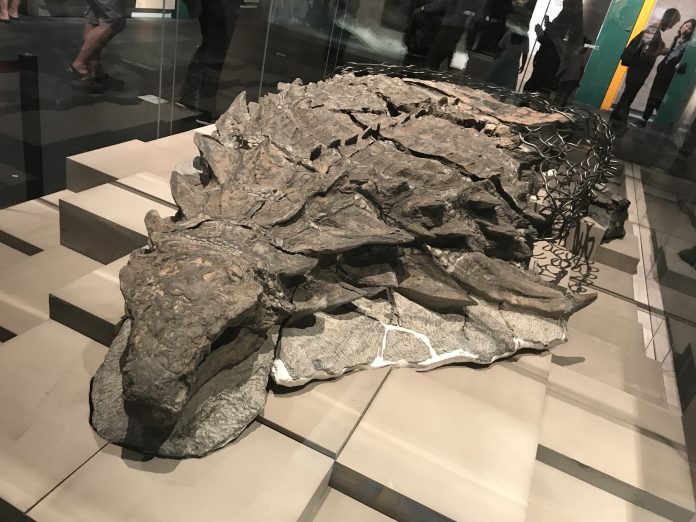Around 110 million years ago, a dinosaur adorned with impressive armored plates met its fate and was mummified after indulging in one final meal.
Usually, evidence of dinosaur diets and their stomach contents are rarely preserved. However, in a remarkable discovery, this particular dinosaur’s remains were encased in a muddy tomb that preserved its stomach contents, providing insights into its selective plant-based diet.
Published in the journal Royal Society Open Science, the study revealed that the dinosaur’s stomach contained well-preserved leaf fragments and other plant fossils down to the cellular level. The remarkable preservation of these remains allowed scientists to gain valuable information about the dinosaur’s dietary preferences.
Named Borealopelta markmitchelli, the nodosaur’s remarkably preserved body was unearthed in 2011 during mining operations in Alberta, Canada. Subsequently, the dinosaur’s remains were deposited in an ancient sea, where it landed on its back in the muddy sea floor and remained undisturbed until its discovery nine years ago.


